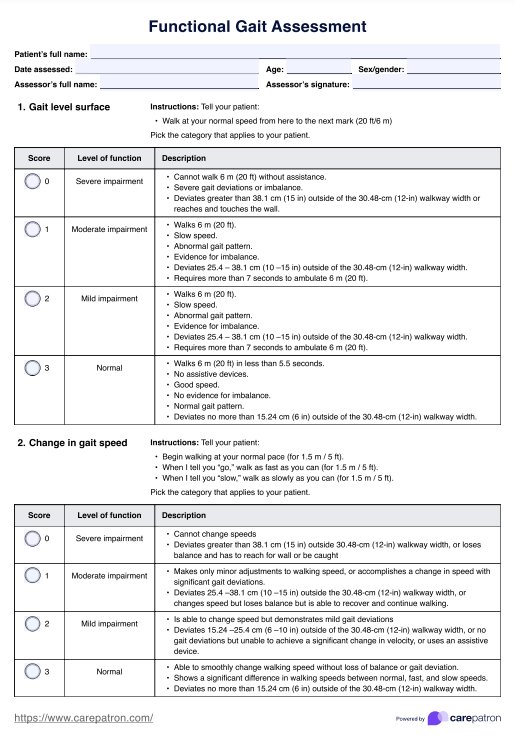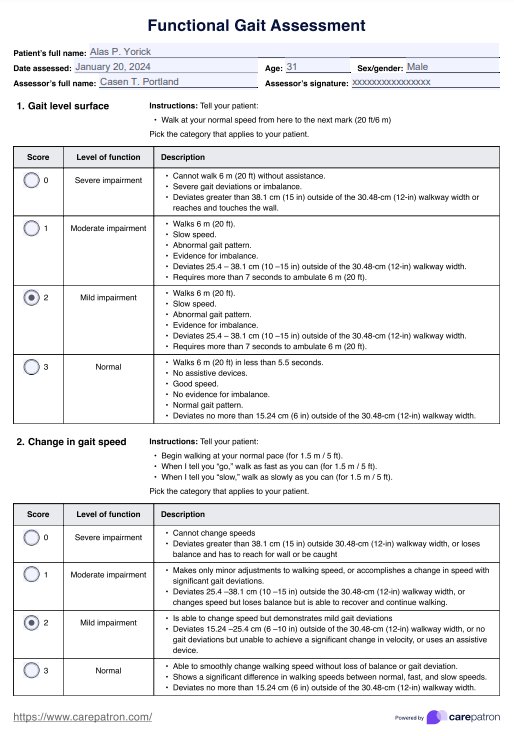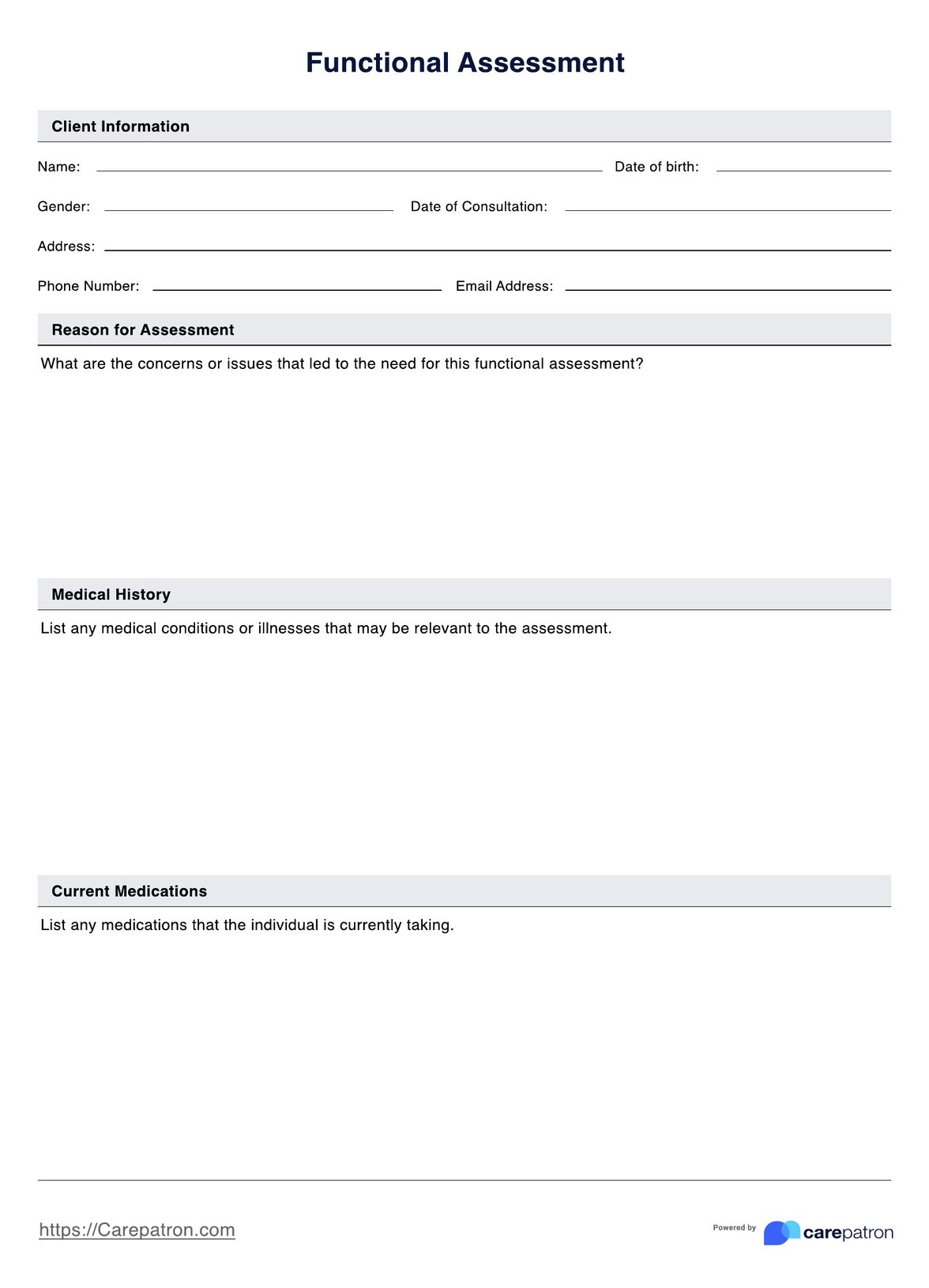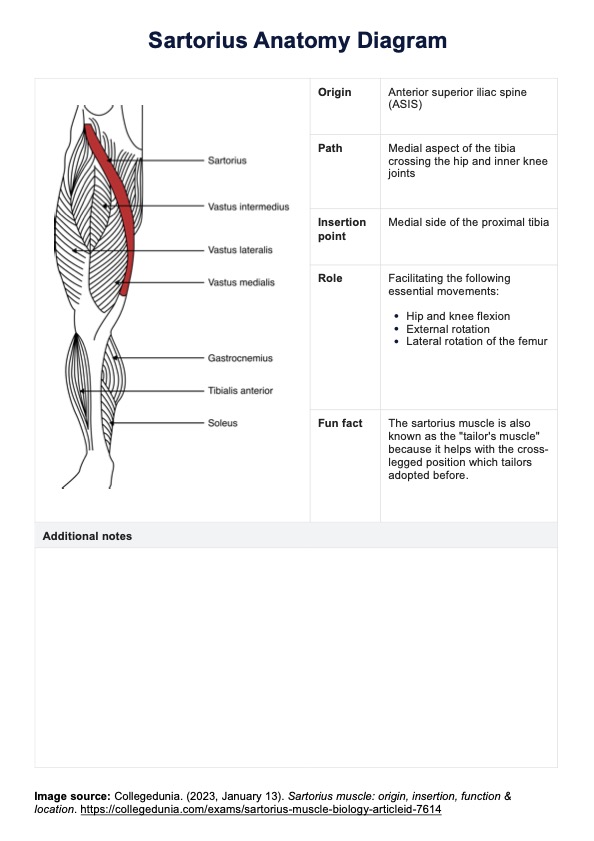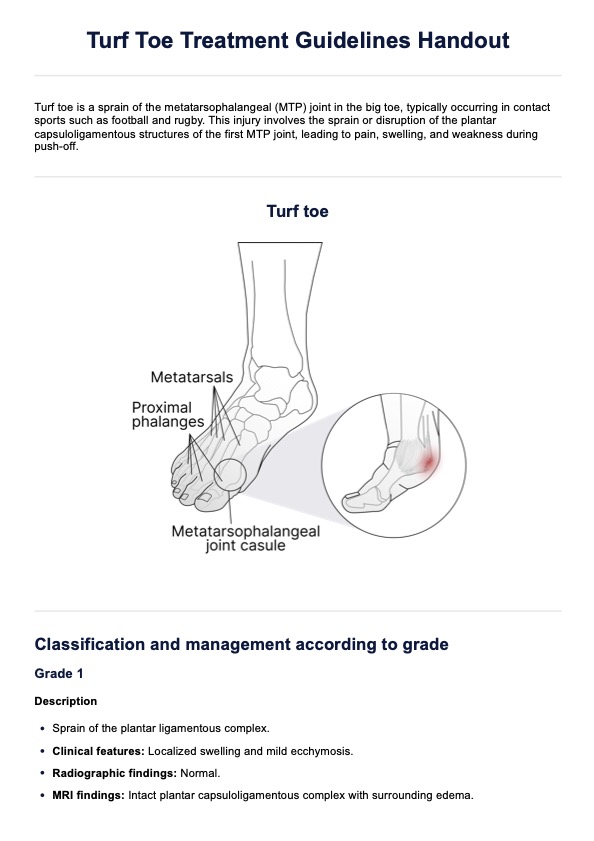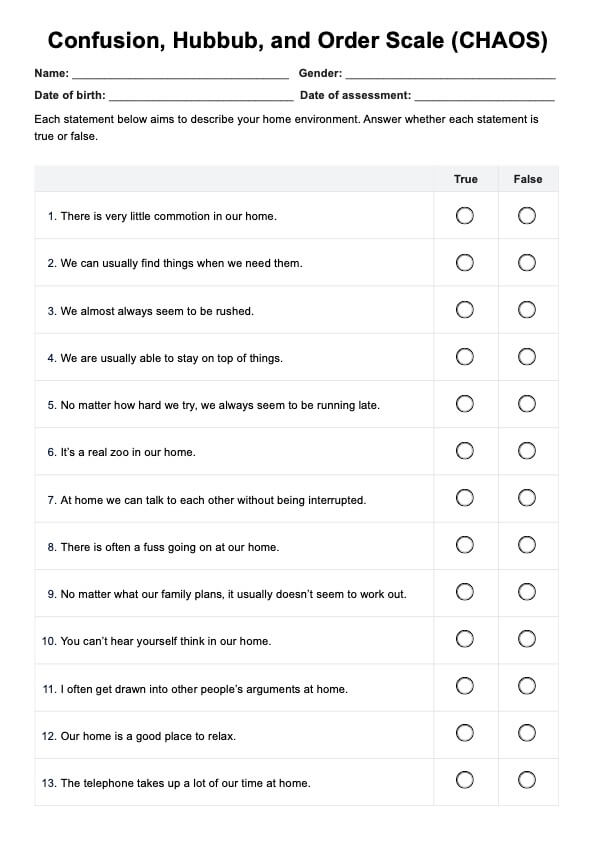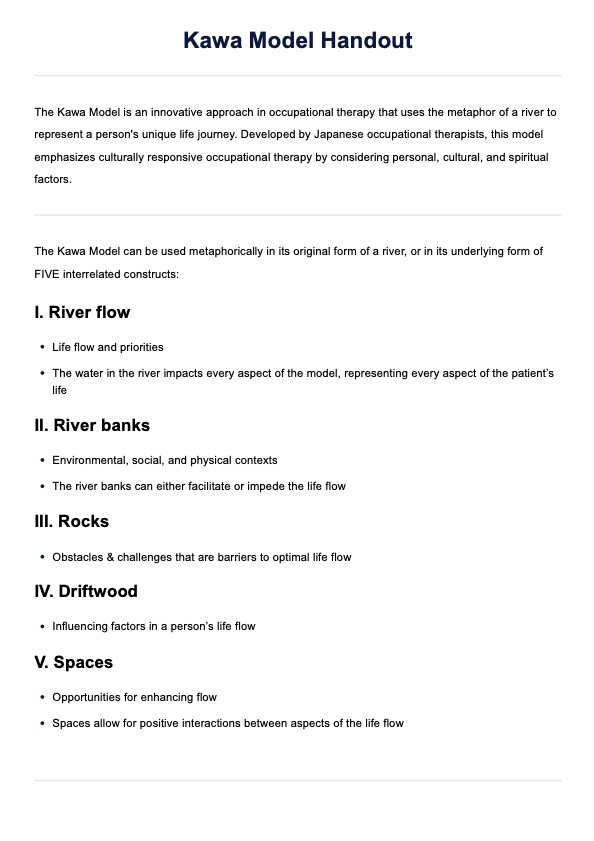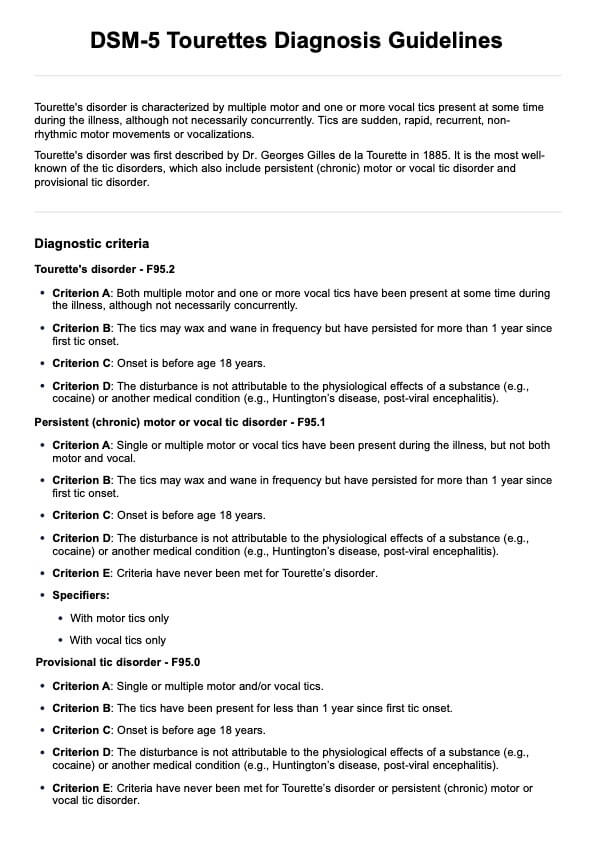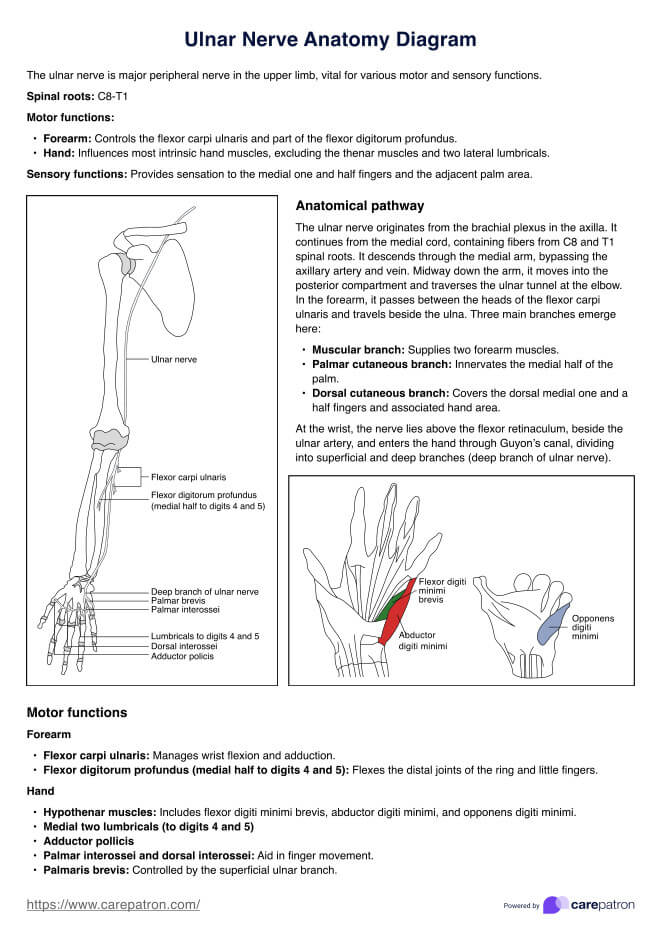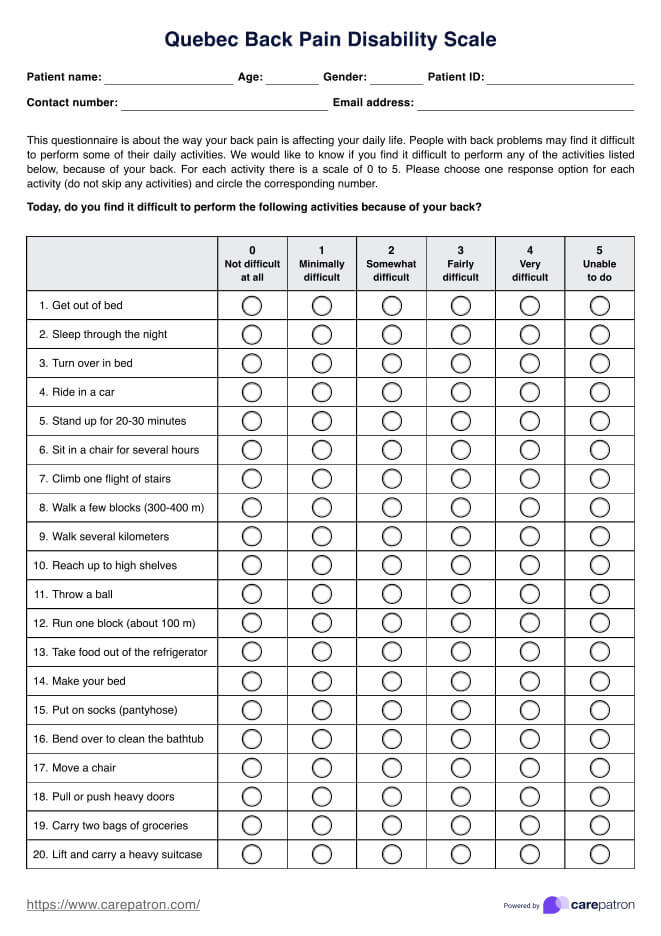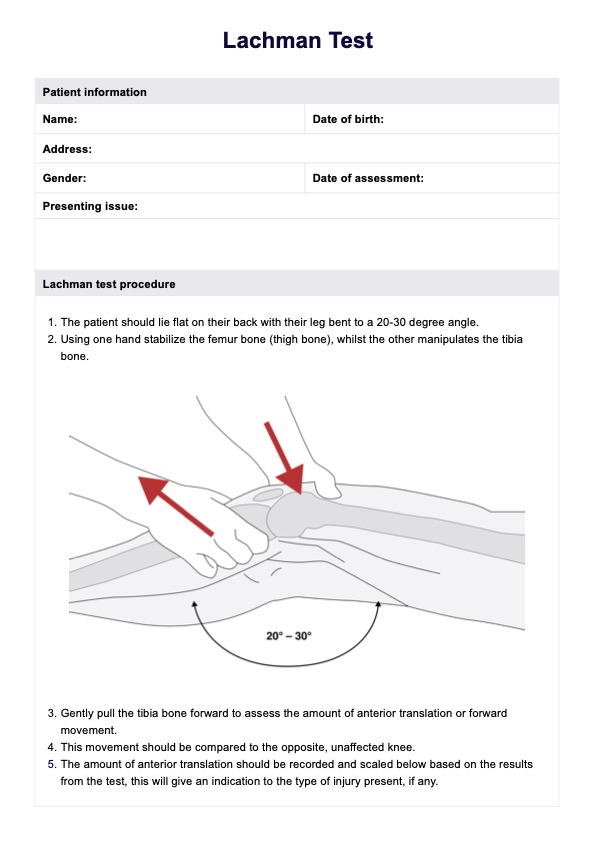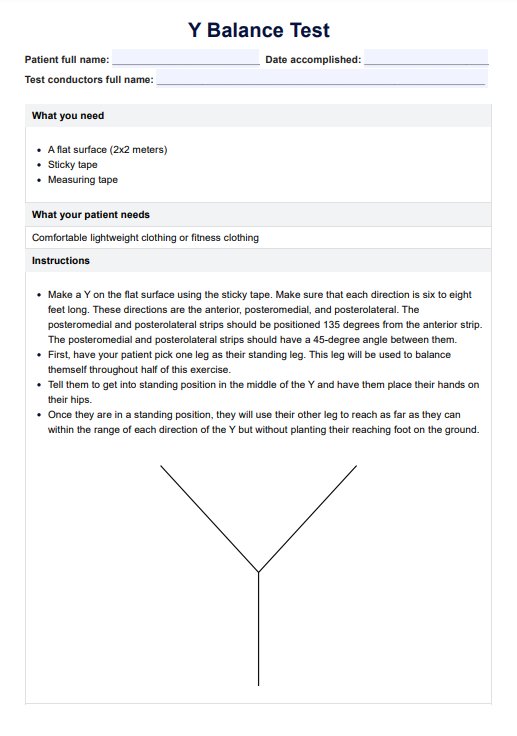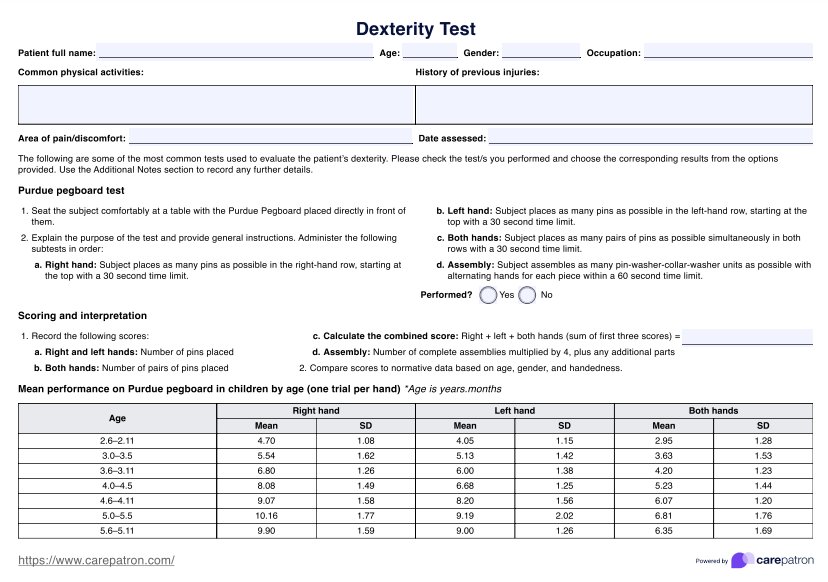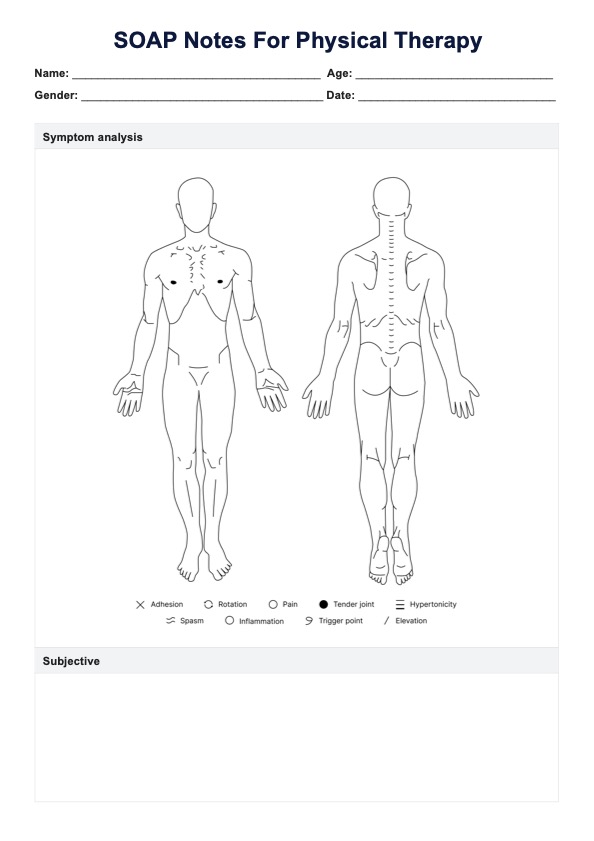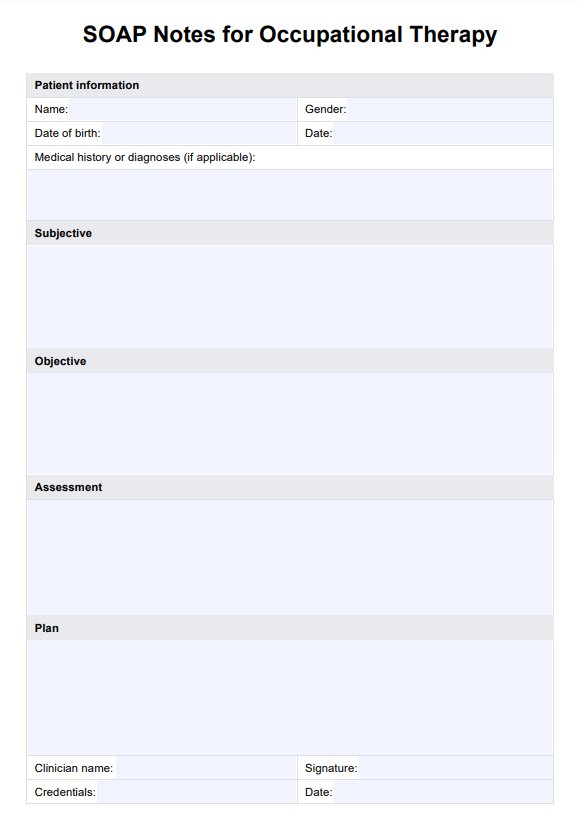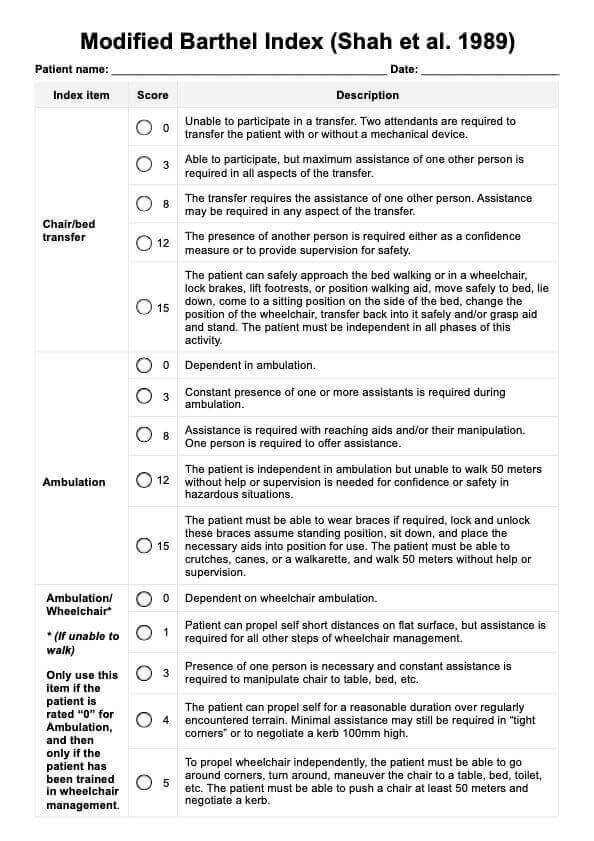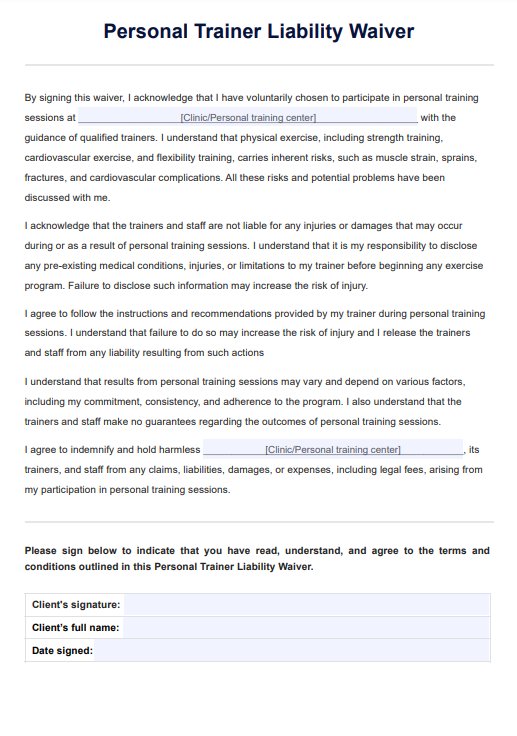Functional Gait Assessment (FGA)
Download our free Functional Gait Assessment (FGA) to assess postural stability and balance in older adults. For instructions and how to score, read further.


What is a Functional Gait Assessment (FGA)?
The Functional Gait Assessment (FGA) is a specialized tool designed for healthcare practitioners to assess postural stability and classify fall risk in community-dwelling older adults and those with suspected balance and vestibular disorders.-
Developed as an extension of the Dynamic Gait Index (DGI), the FGA comprehensively evaluates an individual's ability to perform various walking tasks, making it a valuable instrument in physical therapy. It can be used by physical therapists, rehabilitation specialists, fall prevention specialists, and similar professionals.
One key aspect of the FGA is its focus on dynamic tasks, emphasizing the evaluation of functional gait under conditions that mimic real-world challenges. This includes smoothly changing gait speed (e.g., from slow speed to normal speed), navigating obstacles, and executing turns. Such tasks are crucial for identifying prospective falls, especially in older adults who may face difficulties in adapting to changes in their environment.
The assessment incorporates various head movements, including vertical and horizontal head turns, to evaluate vestibular function. This is particularly relevant in identifying gait deviations related to vestibular disorders, which may go unnoticed during a traditional gait assessment. A smooth path and minimal deviations characterize a normal gait pattern, whereas abnormal gait patterns can indicate an increased fall risk even with only mild deviations.
Functional Gait Assessment Template
Functional Gait Assessment Example
How does this Functional Gait Assessment PDF work?
The Functional Gait Assessment PDF is a systematic and comprehensive tool for healthcare professionals to evaluate gait deviations, particularly in older adults. The step-by-step process outlined in the PDF involves a series of tasks designed to assess different aspects of an individual's gait and postural stability.
Beginning the assessment
Individuals are instructed to begin walking at their normal pace to establish a baseline for their typical gait pattern. This allows healthcare professionals to observe and analyze if the individual demonstrates mild gait deviations from the norm.
Walking straight
The PDF guides individuals to walk straight for a designated distance. This task assesses maintaining a normal gait pattern without deviations or imbalance, providing valuable insights into overall gait stability.
Walking backward
Another component involves walking backward, evaluating the individual's ability to navigate in reverse. This task provides insights into dynamic balance, coordination, and the presence of gait deviations in an unconventional direction.
Gait with an assistive device
If applicable, the assessment considers walking with an assistive device. This accounts for individuals who may rely on aids like canes or walkers, providing a more accurate representation of their functional gait in daily life.
Turning and pivoting
The PDF likely includes instructions for turning and pivoting during walking. This assessment of the agility and balance required for changing directions is crucial for understanding an individual's capacity to navigate real-world environments.
Head turns and eyes closed
Tasks involving head turns and walking with eyes closed assess vestibular function and proprioception. These challenges help identify potential gait deviations under altered sensory conditions, enhancing the assessment's sensitivity.
Obstacle negotiation
During the assessment, individuals may encounter obstacles, requiring them to step over objects. This evaluates the ability to adapt gait to environmental challenges, offering insights into dynamic balance control.
Narrow base of support
The PDF likely includes a task where individuals walk with a narrow base of support, emphasizing heel-to-toe alignment. This assessment, which reflects real-world scenarios, assesses balance and stability under challenging conditions.
Scoring
The Functional Gait Assessment template scoring is based on an ordinal scale, providing a systematic way for healthcare professionals to evaluate an individual's gait performance. The template assigns scores ranging from 0 to 3 for different components, with higher scores indicating better gait function.
Typically, scoring goes as follows:
- You give them a three (3) if they can follow instructions quickly, accurately, and without assistance.
- You give them a zero if (0) they can't or refuse to do the movement.
- You give them two (2) or one (1) depending on how they compensate to accomplish the task. Refer to the template for the specific description differences between the two
For example, in the Gait Level Surface section, a score of 3 is given if the individual walks 20 feet without aids at a good speed and with a normal gait pattern, demonstrating no evidence of imbalance. On the other hand, a score of 0 suggests severe impairment, where the person cannot walk the distance without assistance, displaying severe gait deviations or imbalance.
In the Change in Gait Speed section, a score of 3 is awarded if the individual can smoothly change walking speed without losing balance or gait deviation. Conversely, a score of 0 is given for severe impairment, indicating the inability to change speeds or experiencing a loss of balance.
Similar scoring applies to other sections, such as Gait with Horizontal Head Turns, Gait with Vertical Head Turns, and Steps, where the individual's ability to perform tasks with minimal disruptions to the gait path is assessed.
The scoring system is integral in providing a quantitative measure of gait function, allowing healthcare professionals to identify specific areas of impairment. Using an ordinal scale simplifies the interpretation, making it an effective tool for evaluating gait deviations in older adults.
The scores obtained from each section can be totaled to provide an overall assessment of an individual's functional gait, aiding in classifying fall risk and informing targeted interventions, monitoring gait changes to see if there are significant gait deviations, assess the effectiveness of assistive devices in maintaining a smooth gait path.
Commonly asked questions
The FGA is a standardized tool healthcare professionals use to assess an individual's gait and dynamic balance. It involves specific tasks to evaluate gait deviations and stability during various movements.
Trained healthcare professionals, such as physical therapists, typically administer the FGA. Their expertise ensures accurate observation and interpretation of gait performance.
The FGA assesses gait components, including walking at different speeds, turning backward, and negotiating obstacles. It aims to identify gait deviations and instability that may contribute to falls.
The FGA classifies fall risk based on an individual's performance in specific tasks. Higher scores indicate better gait function, while lower scores suggest impairments and an increased risk of falling.


